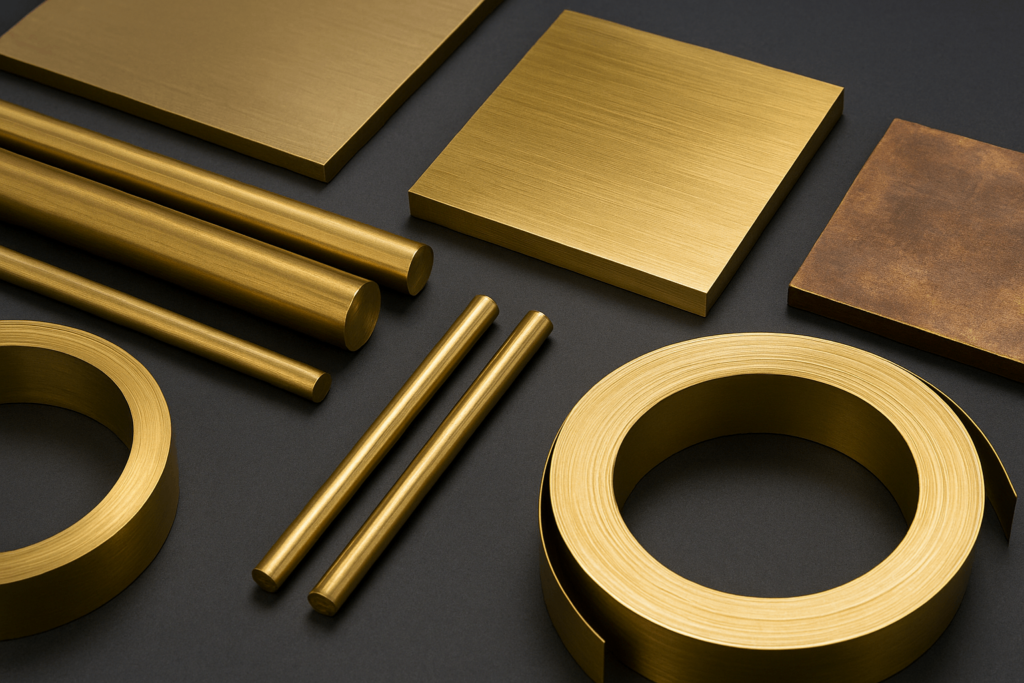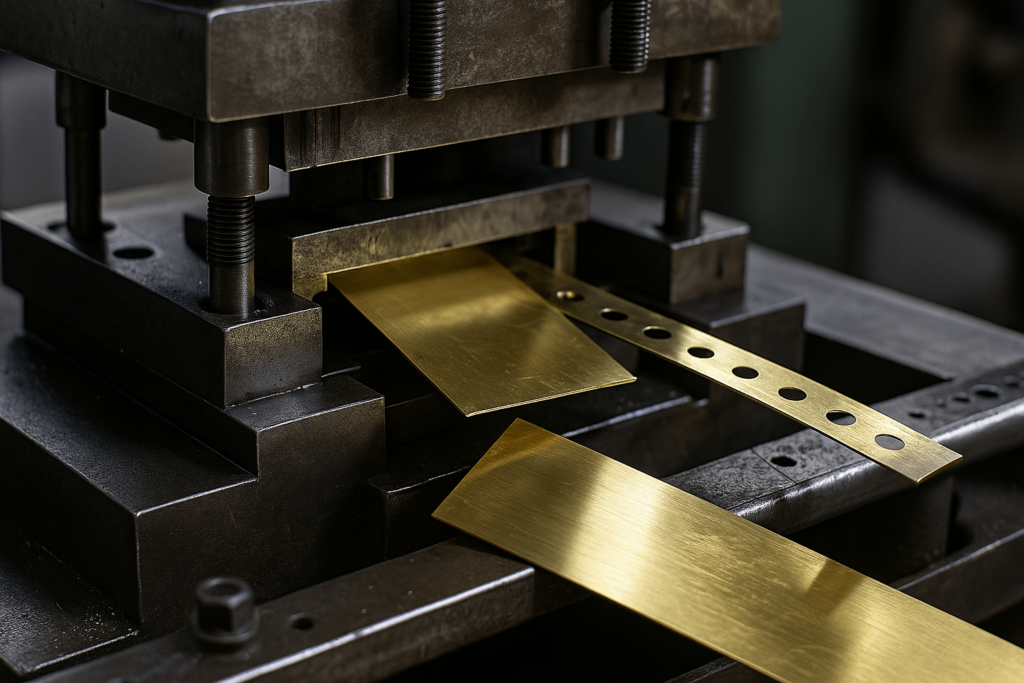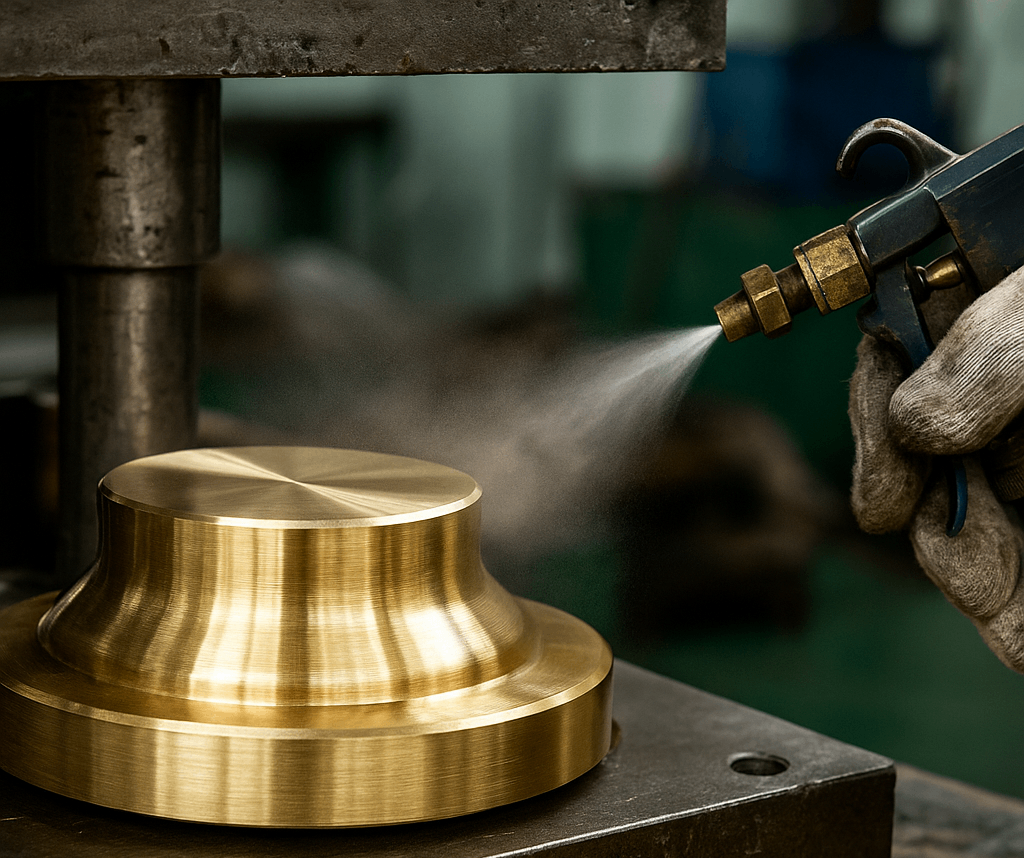Why Brass Stamping Matters to Procurement Professionals
For wholesale buyers, brass stamping isn’t just about sourcing a component—it’s about securing long-term repeatability, stable quality, and adherence to spec across every lot. The materials chosen, tooling design, and process control directly shape how reliably a part can meet its function.
In procurement, brass continues to prove its relevance due to its versatility across form factors, finishes, and environments. It bridges performance with process efficiency, offering procurement teams a material that supports scale without sacrificing spec.
Gold’s high density stems from its atomic structure. With an atomic weight of 197 and a face-centered cubic (FCC) configuration, its atoms are tightly packed. This increases mass per unit volume and contributes to its heavy feel.
Relativistic contraction—a quantum effect from gold’s high atomic number—compresses electron orbitals, enhancing its density and contributing to its unmistakable luster.
In manufacturing, this atomic uniformity results in consistent machining behavior. Buyers sourcing high-precision CNC-machined components benefit from fewer dimensional variances and better yield per batch.
Brass as an Engineering Material: What Procurement Needs to Know
Brass, composed primarily of copper and zinc, may include trace elements like lead, tin, or aluminum to influence machinability, corrosion behavior, or color tone. The alloy selection—not just “brass” generically—will shape outcomes in both cost and performance.
For example:
C260 (Cartridge Brass): Excellent cold formability; ideal for drawn parts, terminals, and shields.
C360 (Free-machining Brass): Great for machining but less effective for formed shapes.
Naval Brass (C464): Adds tin for marine-grade corrosion resistance.
Material selection isn’t isolated from manufacturing. A connector designed in C260 will behave differently in plating, bending, and crimping versus C268. This must be accounted for early in sourcing.

Forming Strategy: Beyond Force, It’s About Control
In practice, brass stamping spans multiple subprocesses:
Blanking: Defines part perimeter. Clearance must be tuned by brass hardness to minimize burrs.
Piercing: Internal cutouts and slots require tight clearance and tool wear monitoring.
Drawing: Deep or shallow drawing depends on brass ductility and tooling pressure.
Bending: Risk of cracking or springback—especially in harder alloys—requires careful bend radius engineering.
These variables are not fixed across production runs. Tool wear, brass lot variability, and humidity can shift outcomes. For precision applications, process control (including inline checks for conductivity or dimensions) makes or breaks quality.

Lubrication and Finishing: Often Overlooked, Always Impactful
Stamping generates heat and friction—especially with brass and heat-sensitive processes. Lubricants must be chosen with downstream operations in mind:
Water-soluble oils may interfere with plating.
Chlorine-based oils extend tool life but can corrode under plating lines.
Micro-lubrication systems reduce waste and mess but require surface prep steps post-stamping.
In one example, a plated telecom component failed reliability testing due to poor lubricant choice. Once reformulated, plating adhesion increased by 25%, and tool downtime dropped.

Where Brass Stamping Delivers Procurement Value
Buyers find value in brass across key application segments:
Electronics: Terminals, ground straps, RF shields
Medical: Biocompatible housings, instrument tags
Architecture/Retail: Branding plates, trim frames, decorative fasteners
The brass alloy copper zinc platform delivers strength and conductivity with polish-friendly finish options. For applications requiring both precision and aesthetic consistency, brass outperforms many alternatives.
Common Sourcing Pitfalls—and How to Avoid Them
Even well-specified designs can fail in production. Common issues include:
Using free-machining brass for bent parts → causes cracking
Choosing alloys without confirming plating compatibility
Not aligning lubrication with final finish requirements
These aren’t just engineering problems—they’re procurement risk factors. Long-term cost and delivery reliability hinge on the sourcing team accounting for these in RFQs and vendor evaluation.
Case Study: How Smart Sourcing Prevented $48K in Losses
A Tier 2 supplier selected 360 brass alloy machining for ease of CNC work, but post-machining bending caused microcracks. The spec was switched to C260 brass, tooling was updated, and finishing pre-cleaned.
The result:
Rejections dropped by 83%
Tool life extended 60%
$48,000 saved in scrap and rework
When procurement anticipates manufacturing needs—not just material cost—outcomes shift.
Wrapping Up: Making Brass Work for You
Brass alloys form a performance platform—each with its own tradeoffs in cost, conductivity, and formability. Success doesn’t stop at selecting the alloy. It’s about connecting material, tooling, and process to the application context.
Achieving consistency in brass stamping often depends on more than the metal—it hinges on controlled execution across every stage of the workflow.
📩 Have a project that needs expert brass part sourcing? Reach out to the team at YISHANG to discuss specs, compliance needs, or prototyping options.

